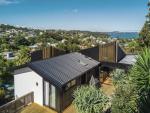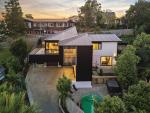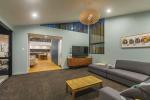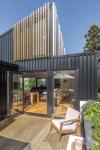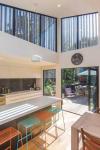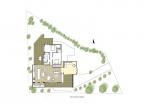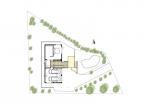Tawhai Residence, Beach Haven Renovation
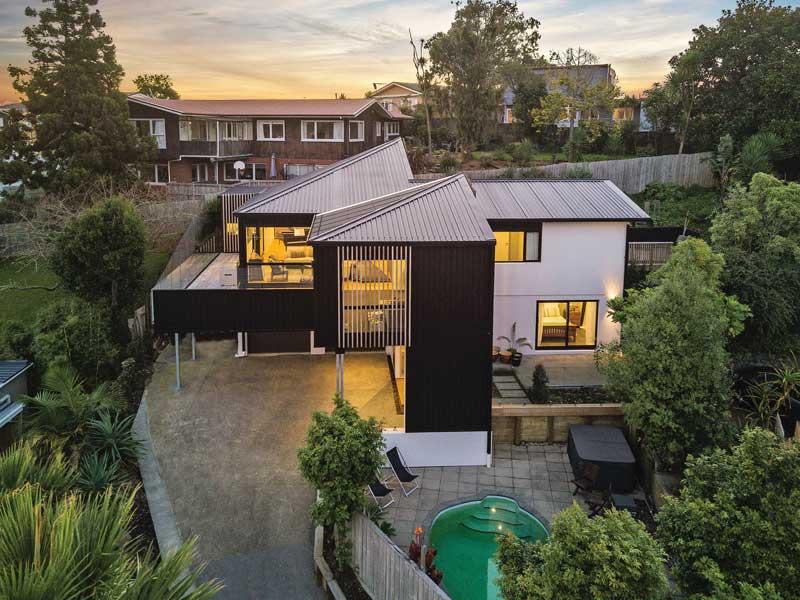
When the owners of a 1970s brick and concrete tile home on the North Shore decided to extend and renovate, they wanted to create a marked contrast between old and new.
They achieved that with a white plaster ‘bagged’ effect on the bricks, while the new parts of the home were clad in back vertically arranged longrun Dimond Brownbuilt 900 sheets, with cedar slats over some of the windows.
Constraining the design process were a tight budget and the fact that the home sits on a steep site.
Creative Arch was happy to take on these challenges and met them with innovative solutions and careful use of materials.
The existing house is perched high on one end of the 690sq m site, and alterations and additions were focused on a new wing along an east-west axis.
Purposeful in positioning and design, the new wing takes advantage of the breath-taking views of Waitemata Harbour to the south, and features a strong feeling of airiness and movement.
Creative Arch’s aim was to produce a design that “extrudes and fragments the existing rectangular form, introducing new high vaulted ceilings and emphasising the verticality through angular geometric shapes and strong vertical lines”.
In extending the house, the design opens up the living and kitchen areas and enlarges existing decks for outdoor entertaining. The larger deck also helps to create a carport underneath. The new carport allows extra space for the owners to utilise the garage for storage.
Existing brick cladding was plastered, with the new kitchen, living, and dining wing clad in long-run metal cladding with cedar screen battens. Cladding the new parts of the house in Dimond Brownbuilt 900 in ‘Black’ created the differentiation between old and new that the owners sought.
Creative Arch says, “The chosen material palette has been simple and intentional. Vertical black long-run metal cladding has been used for the addition, which is low-maintenance, while white plaster has been applied to the existing brick to create a bagged look.
“With the existing strictly rectangular house, the delineation between the new and existing is plainly suggested in the colour contrasts.”
The vertical orientation of the exterior cladding also emphasises the pitched roof forms, arranged in a series of flying wedges providing interest with their geometric nature.
The alterations have transformed what was an enclosed dwelling to one that fully utilises the potential views with strong indoor-outdoor flow.
New and larger glazing units open onto enlarged decks with glass balustrades helping to maximise the views out, while selective enclosure provides visual privacy from neighbours.
The new wing is open plan, containing living, dining, and kitchen. The high ceiling gives a feeling of airiness and a strong connection with the outdoors. Vertical cedar battens on the exterior filter the light entering the spaces from the north as well as providing privacy from neighbours.
The lower floor internally has remained largely unchanged with the new bathroom using light colours for a clinical finish and compensating for lack of natural light.
Ascending to the main floor, the stairs are immediately flooded with light and there is a sense of airiness with oversized geometric windows.
Unfortunately, the house suffered fire damage after the completion of works, requiring rebuild of the interior, which has a soothing palette of neutral and timber tones, seen in the living area with its timber floors, white walls and white cabinetry with some dark accents in the splashback and under the breakfast bar. Also on this level are two bedrooms and another bathroom, again with neutral tones of whites and greys with timber accents.

